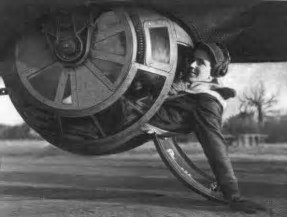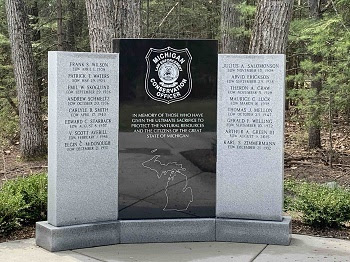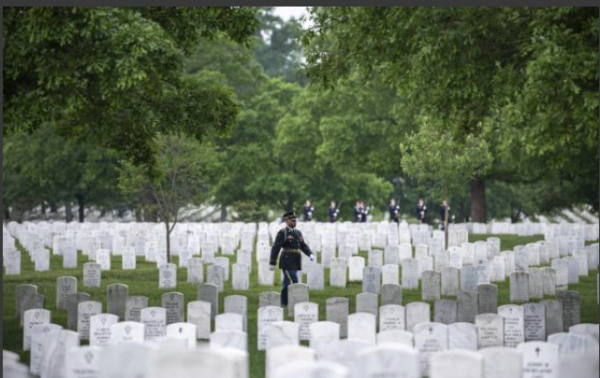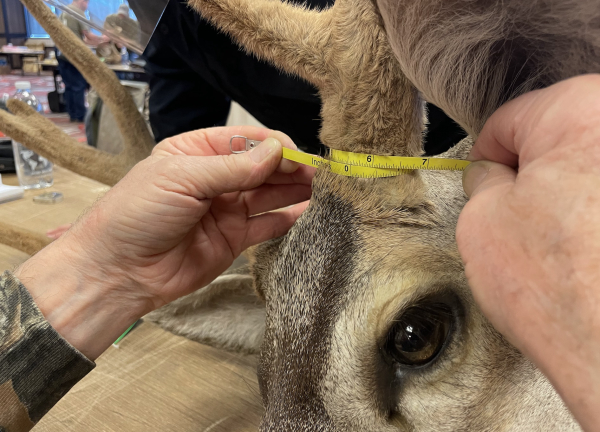Uncle Van: Airman/Gunner
By Glen Wunderlich
This is the weekend that kicks off summer, although I think we should have done something to kick-start spring, as well. It’s also Memorial Day weekend – a time to reflect on those brave Americans who gave their lives to better ours. One of those people who stepped forward is my honorable uncle, Van Wunderlich, who volunteered for military duty in World War II. Although he not only made it through the war, he’s still with us in Demorest, Georgia and is going strong at 93 years young.
From Van’s book, Abundant Anecdotes about the Past, he details his role to save our freedoms, as follows.
I signed up for the Army Air Force on April 19, 1944 and reported to boot camp at Fort Sheridan near Chicago, Illinois. Mom added another silver star to the living room window [my father, Van’s only brother, was the other one.]
I thought the B-17 was one of the largest airplanes I had ever seen. The Air Corps had purchased 12,724 of these bombers [which] received the name Flying Fortress by a Seattle reporter. It had thirteen 50-caliber machine guns located in the nose, top turret, middle section, tail section, and the ball turret underneath the fuselage.
I received a Sharp Shooters Medal while training. We were given a choice of the position we would like to prepare for – and, not being claustrophobic, I chose to train for the ball turret position.

A young turret gunner
There was a height limit of 5 feet 8 inches, so I crouched down when they measured me. I wasn’t informed that some referred to the ball turret as a suicide position, but on examination, there was no higher casualty rate for that area than any other. In case of a belly landing, the turret could be dropped in an operation lasting between 20 and 40 minutes. It was desirable to drop the ball turret to prevent unnecessary damage to the rest of the fuselage. Now they tell me. I never knew at the time, but I did know there was no one in the ball for landings and takeoffs.
We boarded an enormous Italian ocean liner for the long voyage across the Atlantic. We zigzagged in a course that took us 14 days to complete in order to prevent any German submarines from following. The morning came for our first mission. Rising in the dark about 4:00 a.m., we ate breakfast and went directly to the briefing room. The target for the day was a factory somewhere in Czechoslovakia. We took off before dawn for the lengthy eight-hour flight and observed several other B-17s flying with us in close formation.
During training, we were shown quick images of enemy fighting planes such as the German Messerschmitt and the Focke-Wulf-190, as well as our own fighting planes such as the P-51 Mustang. We had to be able to quickly identify in a second what target to shoot at. “Bandits at 3 o-clock high,” a voice would yell, and a silhouette would be flashed to identify. It all came back to me as we made our way over enemy territory.
It was extremely cold during the flight and I found that one of my boots was not heating properly. By occasionally slipping my foot into the lower part of my heated flying suit, I could counteract the numb feeling I was experiencing. It was about this time my mind started playing tricks on me and I thought that if this ball turret ever broke loose from the rest of the plane, I could become a human bomb. I quickly dismissed that idea as I said a little prayer: “Oh God, please be with us today. We are so small and the world is so big.” At the age of 18, I felt invincible as we dropped our payload and returned to England. A debriefing took place just as it does in the old movies with a shot of brandy given to each of us and the long day was over.
It was about 2 days after that mission and the war was declared over. May 8, 1945 is known as V.E. Day. Wow, what a relief.
Hats off to Uncle Van and all those who’ve served – many giving all. It’s been a few years since I’ve visited Van, but I’m already planning a trip to Georgia to shake the man’s hand once again. See you soon, Uncle Van.







